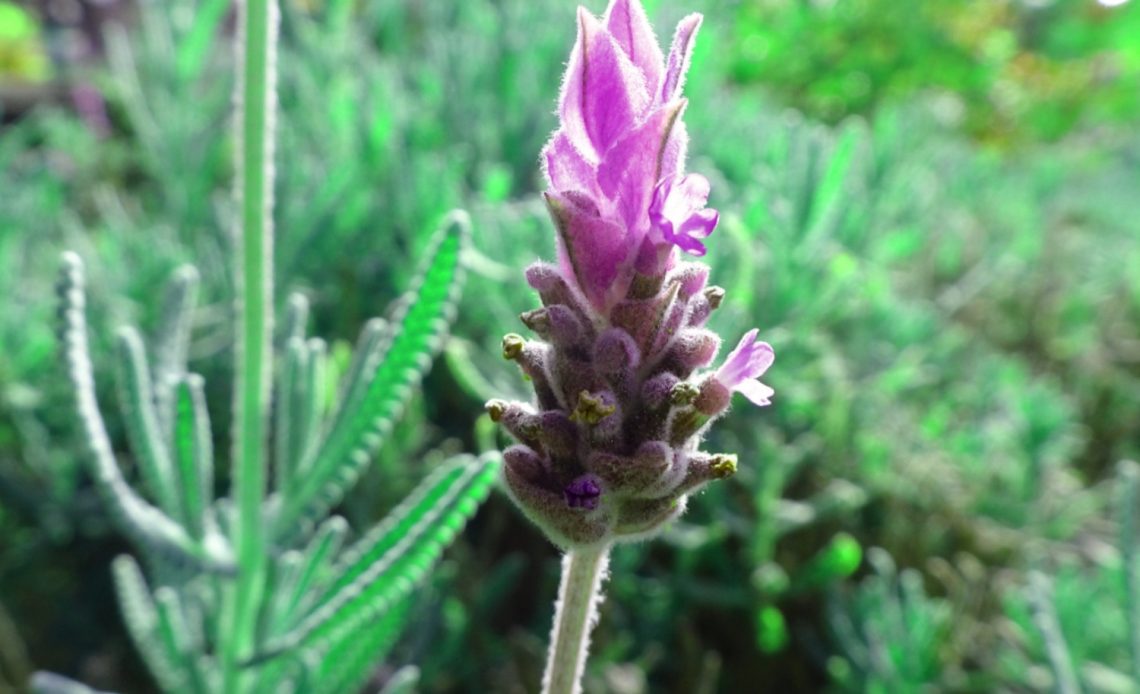

We’re here to help! Wild Yards is a completely free website that is 100% dedicated to helping you create a wildlife-friendly, sustainable yard. Read more
WildYards is reader-supported. When you buy a product through a link on our site, we may earn a comission. Every product is independently selected by our (obsessive) editors and our reviews are unbiased and objective. Read more about our mission or our privacy policy.
If you think you’re a good cook now, just wait until you try your favorite recipes with fresh, homegrown herbs. Not only are herbs easy to grow but they can transform even the blandest dish into a culinary masterpiece. If you’re ready to try growing a few herbs in your garden, but have no idea what to expect, you’re probably wondering, how long does it take for herbs to grow?
While growth rates vary, leafy green herbs like mint, cilantro, and parsley tend to grow quickly. Woody herbs, like lavender and rosemary, may take longer, but once established, plants can continue producing for years.
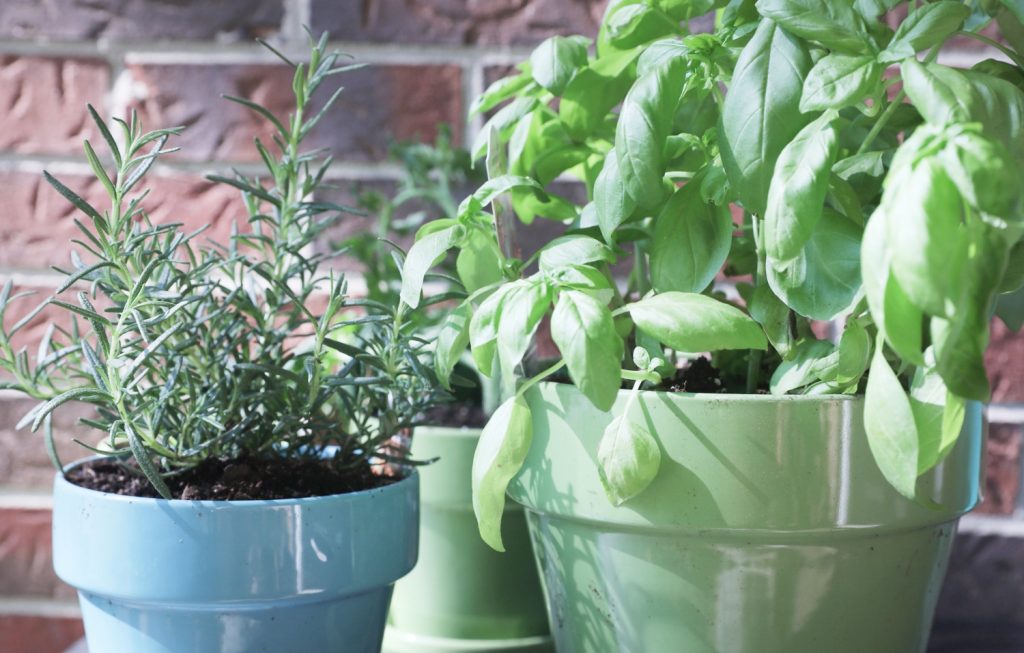
Do herbs grow quickly?
The time it takes for an herb to grow depends entirely upon the herb in question. Some herbs can grow seemingly overnight, but others are slower to mature.
How fast your herbs grow also depends on the time of year that you plant them.
Most herbs should be started indoors in spring and moved outdoors when the weather reaches 70 degrees Fahrenheit. If conditions are ideal, this will help maximize their growth rate for the season.
But what one herb considers “ideal growing conditions” could prove fatal to another herb. So it’s important to keep your herb’s needs in mind to help speed things along.
Starting seedlings later than this timeframe can slow the herb’s growth rate down significantly. If you still want to grow some herbs, but it’s early or midsummer (or even later), you’re going to be better off buying mature plants.
In some cases, as with mint and thyme, you may find you have more success starting plants from cuttings.
We’ve found that some herbs are harder to start from seeds than others. But fresh cuttings taken from these hard-to-start plants and dipped in a little rooting hormone can take off in no time.
If you have the time and the space to do it, try starting different herbs in different ways (from seeds, cuttings, etc) to see which method you like best.
What are the fastest-growing herbs for your garden?
Maybe you’re growing herbs for their culinary and medicinal uses, or maybe you just want to plant some to repel garden pests and attract bees and butterflies.
Whatever the reason, you’ll be happy to learn that herbs are very easy to grow, even if some of them take longer to mature than others.
The following herbs have been arranged in order from the shortest time from seed to harvest to the longest time from seed to harvest.
Cilantro
Not everybody is a fan of cilantro. Some people say it tastes like soap. But homemade salsas and tacos just wouldn’t be the same without a few fresh sprigs of this zesty herb!
Cilantro is one of those plants that’s just easy to grow all the way around, whether you start it from seeds or cuttings. You can also direct-sow cilantro in your garden in early spring.
Cilantro is a cool-weather crop that suffers when the temperatures start to climb above 80. Planting cilantro between rows of peppers and tomatoes helps protect the herb from the elements.
You can start harvesting cilantro leaves 3 to 4 weeks after the seeds sprout. Seeds are ready to collect after the plants have flowered, around 6 to 7 weeks after the seeds germinate.
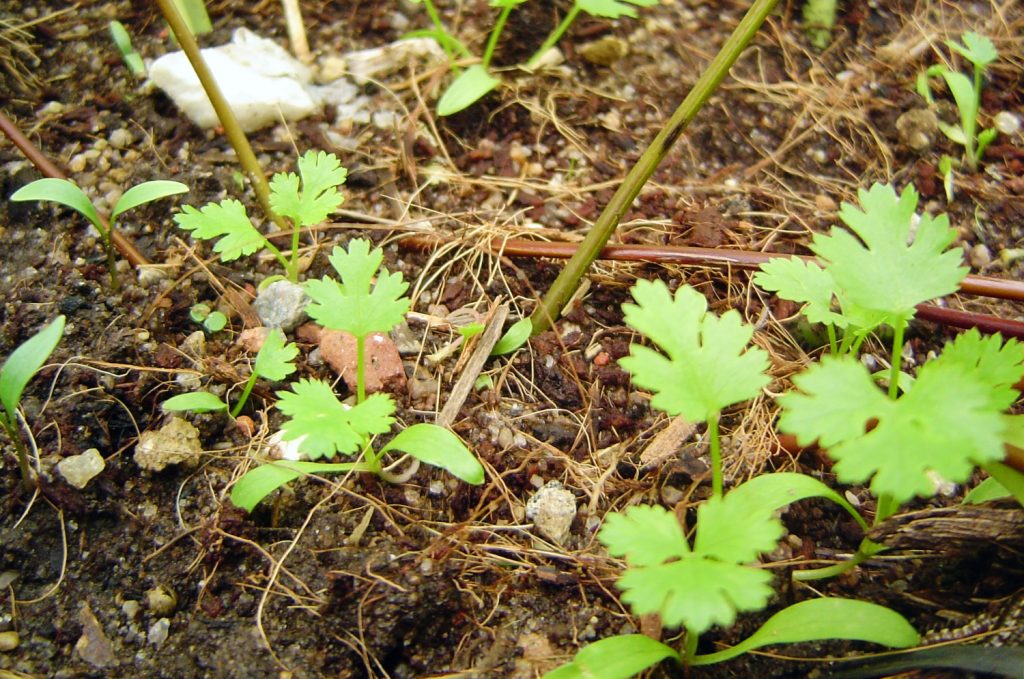
Parsley
Like cilantro, parsley is also a speedy grower. If you love using fresh sprigs of parsley to garnish roasted chicken and other savory dishes, you can start collecting this herb a mere 4 to 6 weeks after starting the seeds!
We love growing parsley as a companion plant for carrots. Parsley and carrots share a lot of the same growing requirements (they are in the same family, after all!), so keeping them in the same space makes them easy to fertilize and care for.
Parsley also grows well with garlic, onions, lettuce, and mint. It gets along with most other plants, so you can use it to fill in the empty spaces in your garden.
It’s best to start parsley indoors in early spring and transfer the seedlings to your raised garden beds when they measure 4 to 6 inches tall. Parsley is also pretty easy to start from cuttings, just be sure to keep the soil in their peat seed pots damp at all times.
During your first harvest at the 4 to 6-week mark, collect only the uppermost third of the plant. Wait until 10 to 12 weeks after seeds germinate for the full harvest.
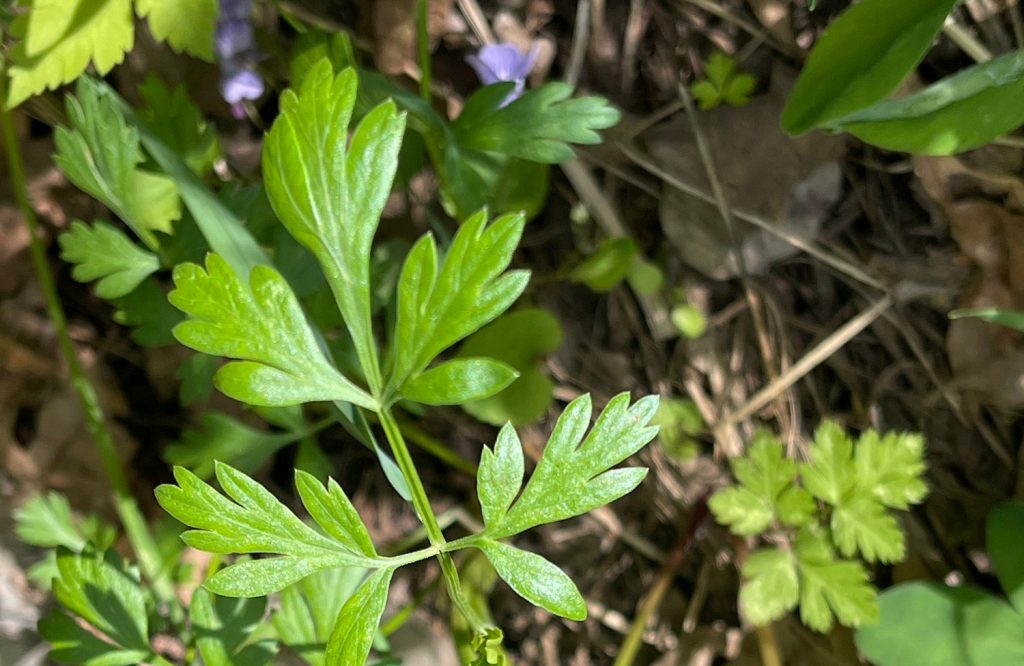
Dill
If you grow cucumbers and make your own pickles, then you’ve got to have some dill in your garden.
Fresh dill can transform your pickle recipes. Even the simple refrigerator pickles you make when you’re feeling lazy and don’t want to break out the canning equipment.
Whether you start dill seeds indoors a few weeks before the last frost, or direct-sow them in your garden in early spring, dill is usually ready to be harvested 4 to 6 weeks after sprouting. Although, it can take 8 to 10 weeks to harvest the plant’s seeds.
Dill is another great companion plant. We grow dill alongside brassicas, like cabbage, broccoli, and cauliflower. Dill keeps cabbage loopers and other insects away.
Mint
We don’t grow mint in our herb garden. Instead, we grow it in our flower beds. The strong fragrance attracts a variety of beneficial pollinators, from bees to hoverflies. Plus, the dense carpet of foliage acts as a living mulch to keep moisture locked into the soil. Two birds, one stone.
You can start mint from seeds indoors in late spring, or outdoors in early spring. Harvest mint 8 to 10 weeks after seeds germinate.
Mint is an easy-growing perennial, so you can continue to harvest sprigs for years to come with minimal care.
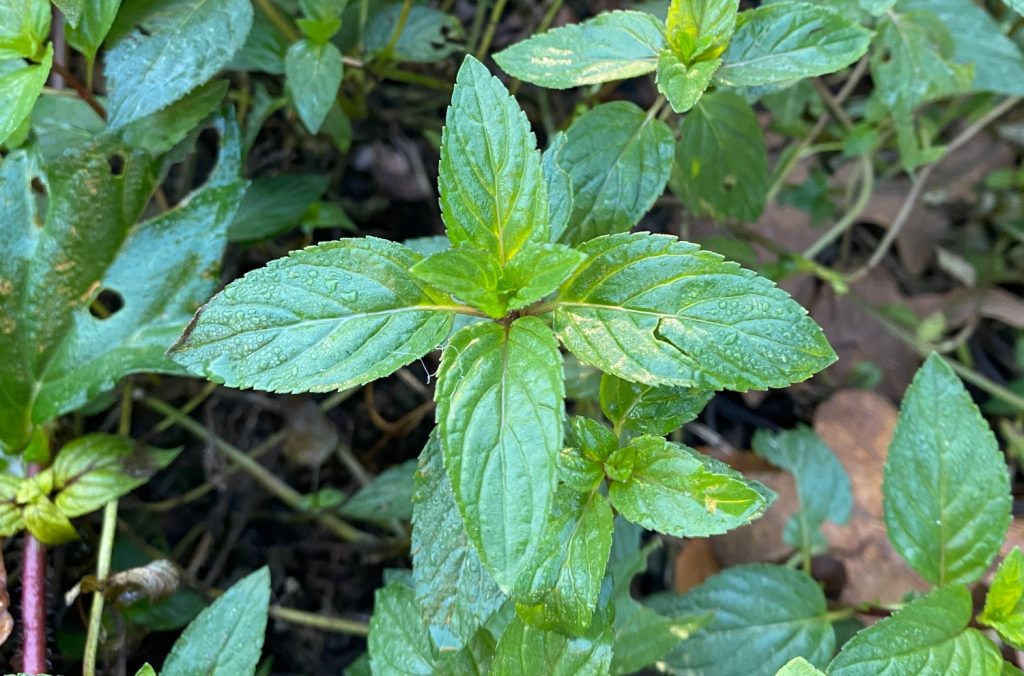
Basil
Did you know basil can enhance the flavor of your tomatoes? It makes them sweeter. Plus, growing basil as a companion plant just makes sense. After all, you use both of these ingredients in sauces, pasta dishes, and pizzas.
Basil does a garden good, attracting a variety of pollinators and predatory insects with its many white flowers, while simultaneously repelling damaging pests like aphids and thrips, thanks to its strong smell.
Basil is a biennial plant but is most often grown as an annual. Seeds should be started in spring, and germinate in 5 to 10 days. Plants can be harvested at 8 weeks.
Even though you should never harvest more than a third of the plant, basil bounces back from pruning quickly, growing more when trimmed than when left completely alone.
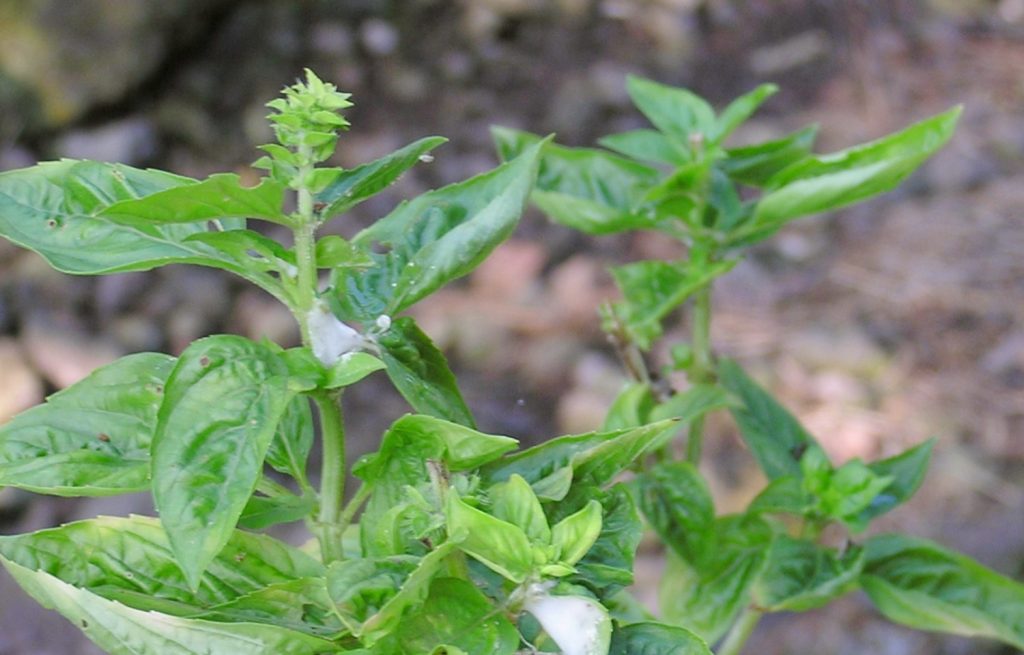
Marjoram
Marjoram belongs to the mint family, but unlike mint, it’s a woody herb with a sharp, bitter flavor profile, reminiscent of pine wood.
Even though marjoram can grow just as enthusiastically as mint, it’s tougher to start from cuttings. You’re much better off ripping up a section of marjoram that has roots, and just sticking it in the dirt.
Unfortunately, marjoram is difficult to start from seeds. We recommend buying a plant from a reputable nursery instead.
If you do manage to start marjoram from seed, it will be around 10 to 12 weeks before the first harvest. Transplanted marjoram can be harvested a few weeks earlier, provided the plants are healthy.
Hard as it is to start from seeds, the good news is that marjoram is a perennial that you can continue harvesting for years.
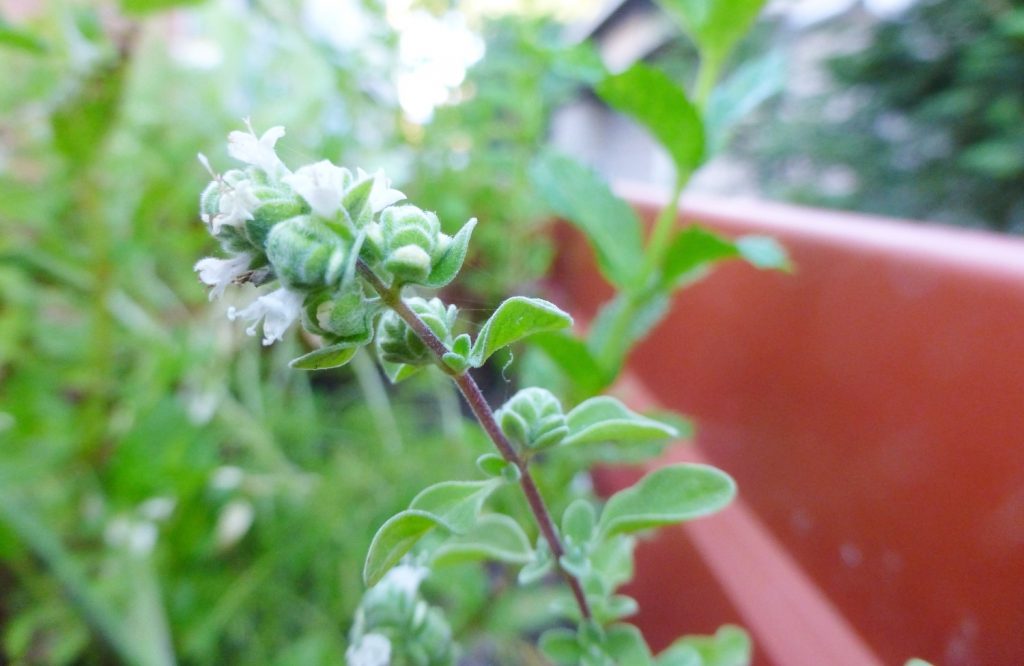
Thyme
Thyme isn’t as difficult to start from seeds as marjoram, but it’s much easier to propagate from cuttings, if you have a mature plant nearby you can take from.
If you have to start thyme from seeds, sow the seeds indoors a few weeks before the last frost. Be sure to keep the soil moist, otherwise, the seeds may not sprout.
Thyme is ready to be harvested 10 to 14 weeks after germination. This herb is somewhat slow to mature, especially compared to rapid growers like cilantro. But thyme is a perennial and will continue to produce year after year.
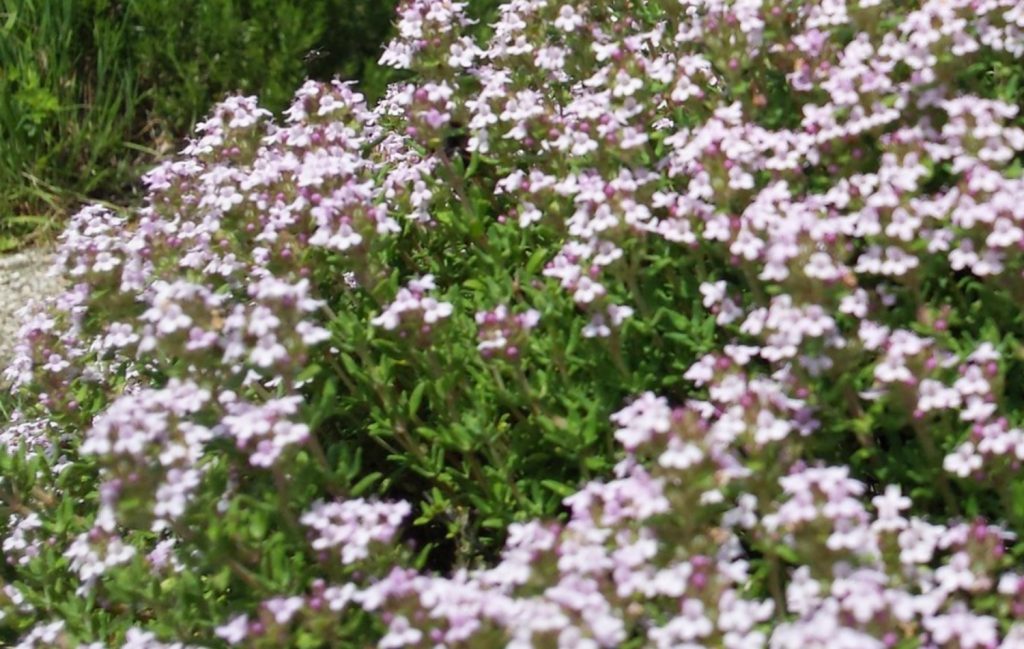
Oregano
Savory and perfect for soups, stews, and sauces, oregano is a great ground cover for your garden.
From seed to harvest, the wait time for oregano is 10 to 14 weeks. But, rest assured, this herb grows quickly once established.
Oregano produces a dense thicket of foliage, so it’s perfect for growing in between crops. It protects the soil from the sun’s rays, reducing evaporation, all while repelling damaging insects.
We like to keep oregano in pots near our exterior entrances because the strong smell keeps flies and gnats away.
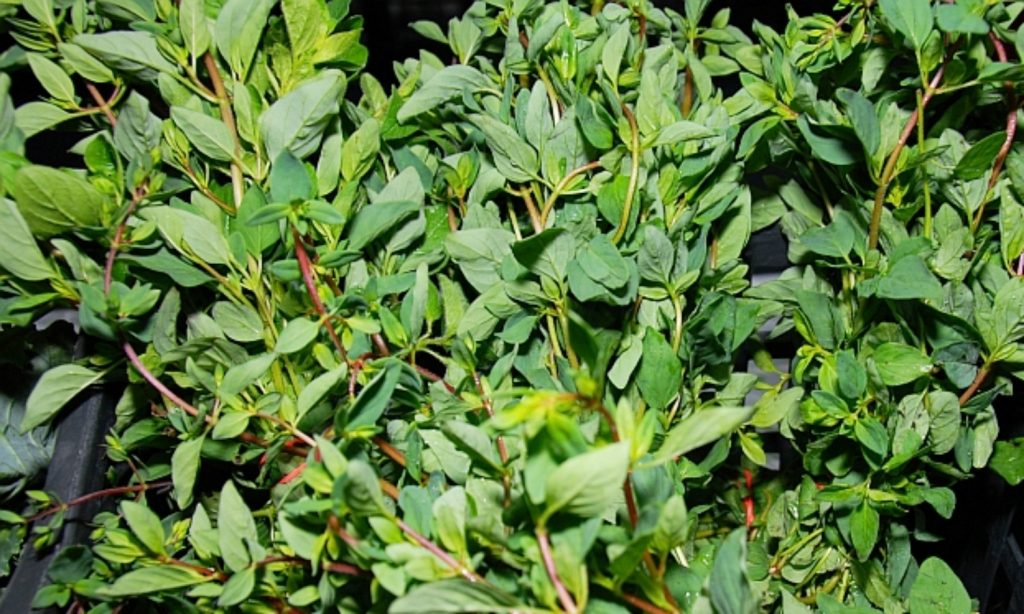
Rosemary
Whether you grow rosemary in your herb garden or in your landscaped flower beds, this fragrant plant is easy to care for.
Rosemary is incredibly drought-tolerant, surviving in sandy soils and going days, even weeks, without water.
While rosemary is not easy to start from seeds, it can be propagated via cuttings. Remember to use fresh green growth for starter plants.
From seeds, rosemary is ready to be harvested 12 to 16 weeks after germination. Naturally, a mature plant purchased from a garden center will be ready to harvest much more quickly.
Rosemary is not only a perennial but also an evergreen, so you can enjoy fresh rosemary needles year-round — just be sure not to over-harvest in winter. The plant may look healthy, but it’s still somewhat dormant during this time.
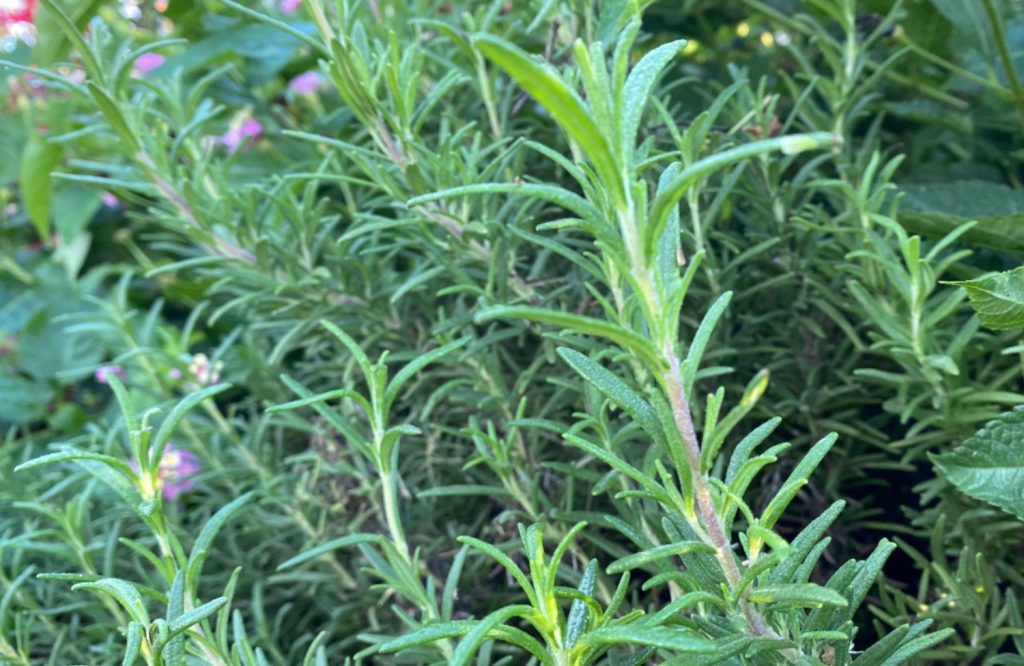
Sage
If you’re bent on starting sage from seed, just know that it’s going to take some time.
This herb’s seeds can take up to 6 weeks to germinate. For this reason, we typically recommend gardeners purchase young plants from a garden center.
Sage is ready to be harvested 12 to 16 weeks after seeds first sprout. Again, if you’ve purchased a sage plant then you’ll be able to harvest foliage much sooner.
Never harvest more than a third of the plant. But do harvest regularly! Routinely trimming leaves from your sage plant will stimulate new growth.
Fennel
In most cases, you’re better off starting seedlings indoors. But we’ve found that fennel performs much better when sown directly in the soil about a month before the last frost of the season.
Fennel is fairly easy to start from seeds, and the fronds are ready to be harvested 12 to 16 weeks after the seeds sprout.
Fennel bulbs are ready to be harvested in late summer to early fall when they’re roughly the size of an apple. To harvest the plant’s seeds, wait until your fennel has flowered and the flowers have turned brown.
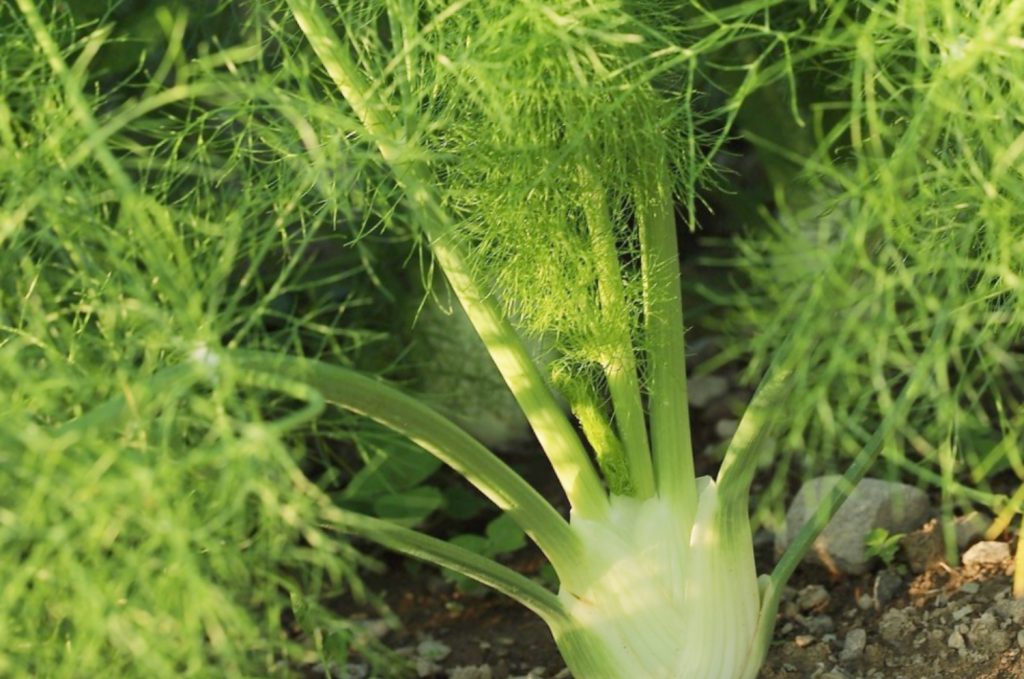
Lavender
Lavender is not necessarily difficult to start from seeds. It can be done. But it takes patience and perseverance.
Seeds must be kept warm and in a brightly lit place until they start to germinate roughly 14 days later. Even when you do everything right, germination rates can still be disappointingly uneven.
We’ve been gardening for a long time, and we still get frustrated trying to get our lavender seeds to pop up. Cuttings can be just as picky, but you’ll have a better chance of starting lavender from fresh green growth than from older woody stems.
For best results, we recommend purchasing an established lavender plant from a nursery.
Lavender can be harvested 12-16 weeks after germination, sooner if you purchased a mature plant. Lavender blooms in midsummer, so flowers can be harvested then.
You can harvest lavender seeds after the flowers have dried and turned brown in late summer.
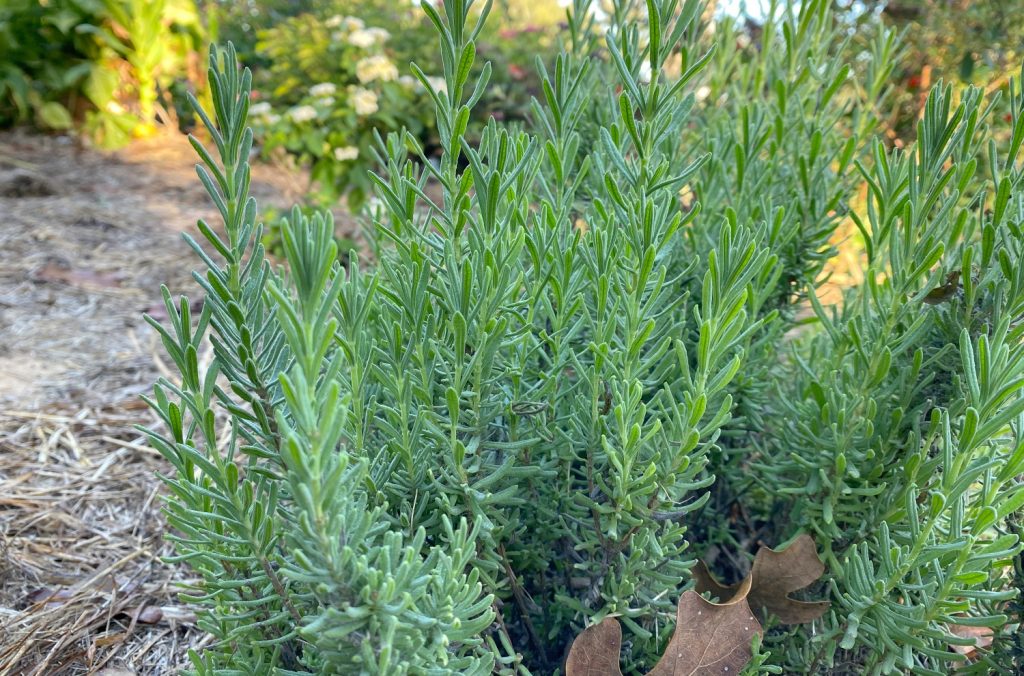
How can you help your herbs grow more quickly?
So, how long does it take for herbs to grow? Well, the answer varies quite a bit! But there are a few things you can do to speed up your herb garden’s development.
Choose nitrogen-rich fertilizers, like hoof and horn meal, for herbs that are grown for their foliage. Cilantro, parsley, dill, oregano, and mint will grow much more quickly this way.
Phosphorus-rich fertilizers, like rock phosphate, can also be used to help your seedlings and young herbs get established quickly. Phosphorus is essential for root development and promotes robust growth.
Herbs aren’t too difficult to grow, especially once you get a little practice. With the right care, herbs can grow quite quickly. Just remember to be patient and have realistic expectations.
